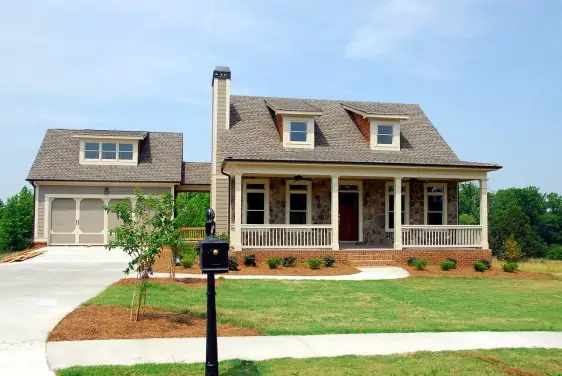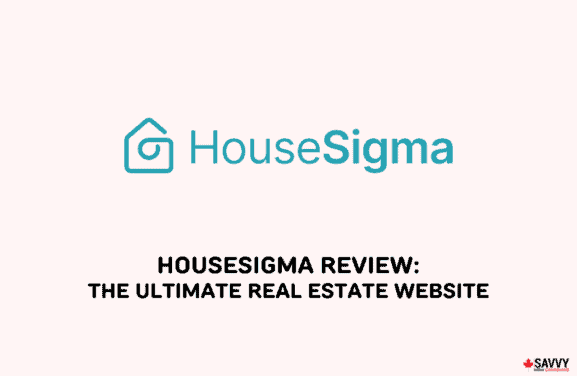The First-Time Home Buyer Incentive (FTHBI) provides a helpful way for Canadians to get on the housing ladder.
This government program contributes towards the cost of your first home through an interest-free loan. The final amount you pay back is based on the future value of your property.
In this guide, we look at how it works, the pros and cons, who can qualify, and more to help you decide whether it is a suitable option.
Key Takeaways
- You can borrow 5% or 10% of the value of your property using the First-Time Home Buyer Incentive.
- It is only available for first-time buyers in Canada.
- The loan is interest-free, but the final amount you repay is based on the value of your property at the time you repay the loan.
What is the First-Time Home Buyer Incentive?
The First-Time Home Buyer Incentive is a government programme designed to help reduce the cost of homeownership for first-time buyers.
It is a shared equity instrument where you can get a loan of up to 10% of the property’s purchase price to put towards your down payment. It is available nationwide but only for people buying their first homes.
If you’re struggling to save up a larger down payment, the FTHBI loan could be useful.
As long as you can afford the minimum down payment, you could use it to pay a larger down payment to reduce the size of your mortgage.
A larger down payment means a smaller mortgage and monthly payments, helping to make owning your first home more affordable.
How Does the First-Time Home Buyer Incentive Work?
First, you need to qualify, which we’ll look at later. If you qualify to receive the loan, you will receive one of the following:
- 5% of the property’s purchase price for an existing home.
- 5% of the purchase price for a manufactured or mobile home.
- Either 5% or 10% of the purchase price for a new construction home.
The loan is interest-free but must be repaid in full within 25 years or when you sell the house, whichever occurs first.
However, you don’t repay the same amount as you borrow. The amount you pay is based on the value of your property when you sell. We’ll go into more detail on this later.
It essentially gives you more equity when you take out a mortgage and reduces the amount you borrow.
If your property appreciates or depreciates in value, you pay back the same percentage of the property value or the incentive amount plus or minus a maximum of 8% of the gain or loss per year.
While you will end up paying back more if your home increases in value, the additional savings you make on your mortgage payments over the years can add up to more than the amount you pay back.
How Much Can You Receive from the First-Time Home Buyer Incentive?
The loan amount is 5% or 10% of the property value. As such, the total amount you will receive depends on the property value.
Do You Have to Repay the First-Time Home Buyer Incentive?
You must repay the FTHBI loan, but it can still work out in your favour.
This is a shared equity agreement, which means you and the lender own a percentage of the property. This means you don’t repay the same amount you borrow.
Instead, while it is an interest-free loan, you must repay a proportion of the property’s market value.
With this incentive, the government essentially owns 5% or 10% of your home. As such, it is entitled to its share of the property’s value when you sell it or repay the loan.
The amount you repay is affected by the property’s value at the time you repay.
If your home has appreciated, you will pay back the loan percentage (e.g. 5%) of the property’s value or 8% annual growth of the amount you borrowed, whichever is the lower of the two.
If your home has depreciated, you will pay back the percentage of the value of the property or an 8% annual loss of the amount you borrowed, whichever is higher.
You must repay it in full either when you sell your property or a maximum of 25 years later. However, you can also repay it earlier if you want to without any penalties and without having to sell your home.
In this case, the amount you repay will be based on your home’s value when you repay the loan.
Who Qualifies for the First-Time Home Buyer Incentive?
As you may have guessed from the name, this is only available for first-time buyers. This essentially means you have never purchased a home.
You must also not have occupied a home in the last four years that was owned by you or your spouse or common-law partner.
However, even if you don’t meet these requirements, you may still qualify if your marriage or common-law partnership has recently broken down.
In addition, you must be a Canadian citizen, permanent resident, or be authorized to work in the country.
You must also have enough funds to make the minimum down payment, and you must be pre-approved for a mortgage over 80% of the property’s value.
There is also a maximum income limit to qualify. This cannot exceed $120,000 in most of Canada or $150,000 if you purchase a home in Toronto, Victoria, or Vancouver.
Finally, you cannot borrow more than four times your income to buy your home. However, this is increased to 4.5 times your income if you buy a home in Toronto, Victoria, or Vancouver.
How to Apply for the First-Time Home Buyer Incentive
If you are a first-time home buyer in Canada and are eligible for the FTHBI loan, you must get pre-approved for a mortgage first. You must then choose the property you want to buy before you can apply.
The application process is relatively simple. All you need to do is download and fill in the following two forms:
- FTHBI – SEM Information Package
- SEM Attestation and Consent Form
You can download both forms in PDF format here.
When you have filled in the forms, print them out and hand them to your mortgage lender. They will then submit the forms for you.
If your application is successful, you must contact FNF Canada to finalize and activate the loan. You must do this two weeks or more before the closing date.
Pros and Cons of the Canada First-Time Home Buyer Incentive
Pros
- Reduce the cost of your mortgage.
- The loan is interest-free.
- There are no penalties if you pay it back early.
- The application process is straightforward.
Cons
- It is not available for all homebuyers.
- You may need to pay appraisal costs if you repay the loan without selling your property.
- The maximum income and home valuation limits may impact you.
Other Government Assistance for First-Time Home Buyers in Canada
In Canada, first-time home buyers may be able to take advantage of other programs.
There are several other government assistance programmes available if you are a first-time buyer, so it’s worth looking at these before deciding which is the most suitable.
Home Buyer’s Plan (HBP)
You can withdraw up to $35,000 from your Registered Retirement Savings Account (RRSP) or up to $70,000 for a couple with the HBP, and the withdrawal is tax-free. You can then put this towards buying your first home.
You must earn $120,000 or less in income to qualify, and you have 15 years to repay the amount you withdraw.
Tax-Free Home Savings Account (FHSA)
You can set up this account to help you save up for your first home by making tax-deductible contributions. The savings limit is $8,000 per year, and the maximum limit is $40,000. It is only available for first-time buyers.
Provincial Incentives
You can also find incentives in different provinces, so explore what’s available where you live. This can be especially useful in more expensive markets like BC and Ontario.
Examples include the Public Essential and Key (PEAK) Program in Alberta, the Land Transfer Tax Refund for First-Time Homebuyers in Ontario, and the Home Ownership Program in New Brunswick.
FAQs
You may be able to access the Home Buyer’s Plan (HBP), which enables you to withdraw up to $35,000 from your RRSP tax-free to put towards buying a property.
Closing costs vary, but you can expect to pay between about 1.5% and 5%.
The current average age to buy a first home in Canada is 36 years old.
It depends on your mortgage rate and the rate of return on your RRSP. If your mortgage rate is higher, it may be worth paying it down first.
Related:



